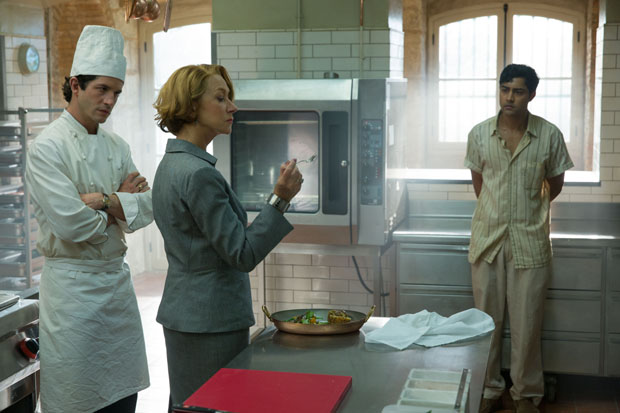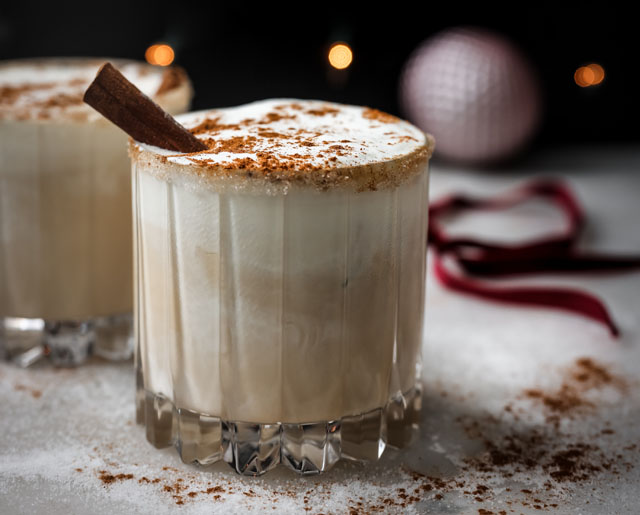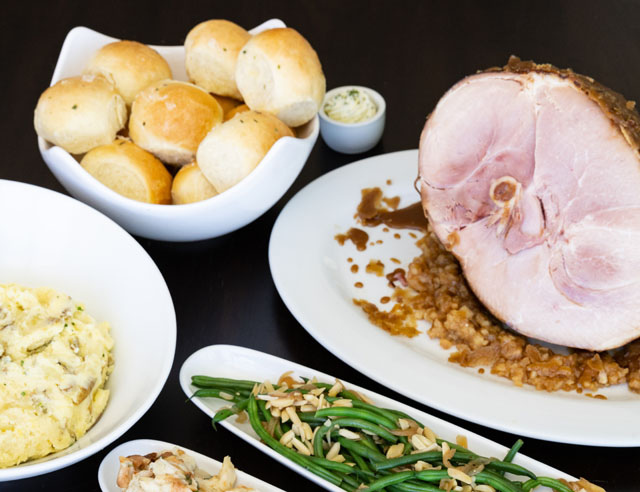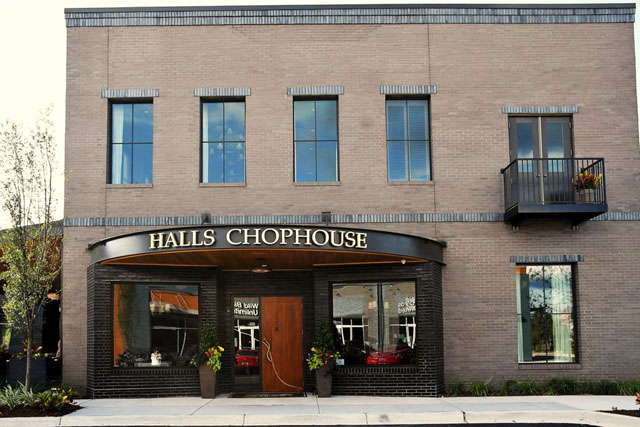Feast for a King
29 Sep 2013
Tender, succulent roasts, as easy as they are superb, deserve their place at the center of the table
By JEFF ALLEN » Photos by OLIVIA RAE JAMES » Recipes by JULIA CHUN
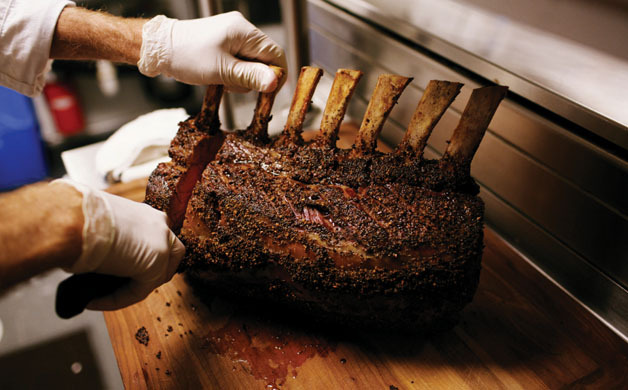
At work, Halls Chophouse executive chef Matthew Niessner deals with some of the finest steaks in Charleston. But cooking for the family requires a different approach. At home, Niessner prefers to buy large cuts that lend economy to the grocery budget, and he advocates cutting your own to maximize their use.
Take something as simple as the chicken. The onslaught of precut, boneless, skinless chicken parts that crowd the typical grocery store meat case has slowly edged out the traditional whole bird – and according to Niessner, much of the usefulness as well. Buying a whole bird and roasting it allows the cook to stretch the purchase into multiple meals, but many people shy away from the challenge of carving the bird.
A simple roasted chicken is easy enough to prepare. A little seasoning, a bit of oil rubbed over the surface, and a 400°F oven until the meat reaches 145°F will do the trick. Niessner recommends starting the chicken with the breast side down to allow juices in the bird to flow into that portion, and attenuate any dryness that breast meat can develop. After 45 minutes of cooking, he flips his bird over and allows the skin to roast to a golden brown. Of course, at this point the cook is faced with dismantling a whole chicken.
Niessner attacks the problem by first separating the breasts and wings whole, cutting closely against the rib bones. He then removes the leg quarter and divides it into two pieces at the joint. To slice the breast into presentable slices, he recommends pushing against the skin with your fingers to create a bit of tension, then slicing (shown). This avoids the common problem of having the crispy skin slide whole from atop the meat below. Lastly, he advises cooks to never forget to turn over the carcass and remove the “oysters” from the scalloped cavities along the back, as “these are the best morsels in the bird.”
All of this effort yields a beautiful apportionment of food. The breast slices can be served hot, dark meat shredded for chicken salad, and the carcass boiled to make a delicious chicken soup stock – three meals for the price of one bird.
A similar economy informs his use of a pork loin. Niessner buys a whole loin, paying special attention to the amount of “spinalis” muscle, the dark, tender muscle that wraps around the shoulder end of the loin. Because the spinalis is so tender and flavorful, Niessner removes that end of the loin, crusts it with salt and pepper, and roasts it whole, pairing it with gravy made from reserved trimmings. This roast can feed a family of four with plenty of leftovers for his favorite cold sub, a pressed Cuban stuffed with provolone, fresh spinach, and stone ground mustard on a soft roll. He cuts the remainder of the loin into quarter-inch slices and pounds them thin to make pork cutlets, or scaloppini that can be prepared in any number of classic methods.
Roasting the pork loin can be as simple as a whole chicken, just some salt, pepper, and oil, perhaps a little fresh sage or thyme, but he sears the roast in a hot pan before placing it into the oven at 325°F. When the thickest portion reaches 140°F, he removes the roast from the oven and allows it to rest “long enough to gather your guests and pour the wine,” he says, ever cognizant of the kitchen rhythms that differentiate a home environment from a busy restaurant line. Cutlets provide the home cook with a week’s worth of meals: they could be gently sautéed in brown butter, perhaps wrapped “saltimbocca” in prosciutto and sage, or breaded and “chicken-fried” with a rich pan gravy slathered over the top.
Of course, the executive chef of Halls Chophouse leans towards beef, and in that regard Niessner considers a bone-in rib roast to be the best way to luxuriantly feed a holiday crowd. He recommends asking your butcher for an “Eight bone roast” and cooking it simply with a salt, pepper, and canola oil rub. He starts his roast in the oven at 475°F, hot enough to crust the outside with a flavorful char, and lowers the temperature to 350°F after a few minutes until the desired temperature is met: 115°F for rare, 125°F for medium, 140°F for medium-well, and 150°F if you desire it well done.
Beyond cooking the roast, successfully serving it requires determining your guests’ predilections and taste in meat. Just as a pork loin contains the tender spinalis muscle, a rib also enjoys such muscling and texture at the shoulder end of the cut. Guests who might prefer large, more marbled cuts melting with fat get carvings from this end – with big appetites receiving a thickly sliced chunk replete with protruding bone. He is so dedicated to this form of personal attention, in fact, that guests at Halls Chophouse can order rib steaks numbered by their distance in bones from the shoulder-end of the primal cut.
For more dainty eaters, the other end of such a roast is more apropos. Niessner often removes the bones as a slab at the leaner end of the roast, and prepares thin slices that can be beautifully fanned on a platter or plate. This allows him to attend to smaller appetites as well as use the leaner leftovers for delicious roast beef sandwiches slathered with horseradish.
And what to do with the leftover bones? Niessner used to give them to his dog, until the vet complained.
Regardless your preference of meat, or even a whole fish that you gently slide from the bones, buying larger cuts and learning to carve them yourself can save money and impress the neighbors. In our modern lifestyles, such kitchen activities can seem quaint or overly complicated, but grandmothers and chefs know the value of purchasing the whole lot, and the delicious results that leftovers, trimmings, and bones can provide to the accomplished cook.
RECIPES
Prime Rib
Serves 8
These days, most meat markets sell standing beef rib roasts whose smaller connective bones―called the chine bone and the feather bone―have already been removed, which makes the meat easier to carve and produces a more handsome roast. Some markets will even slice the meat off the rib bones and then tie them back on; we found that the roast (facing page) came out juicier when the bones were left attached. Either way, be sure the roast is tied at intervals between the rib bones; otherwise the flavorful crust may peel away from the meat during roasting.
1 5-bone beef standing rib roast (10-12 lbs.), chine bone removed and tied back on
2 tablespoons kosher salt
1 1/2 tablespoons dry mustard
1 1/2 tablespoons chopped fresh rosemary leaves
Coarsely ground black pepper, to taste
1. Season beef with salt, including the rack of bones. Rub mustard all over beef; sprinkle with rosemary and pepper. Set the beef in a 12" x 14" roasting pan. Cover loosely with plastic wrap and refrigerate for 2-3 days.
2. Remove beef from refrigerator 3 hours before you are ready to roast it, to allow it to come to room temperature. Arrange rack in lower third of oven and heat to 450°F. Roast the beef, rib side up, until it begins to brown and sizzle, 20-25 minutes. Reduce temperature to 325°F; continue roasting until the meat is 120°F (for medium rare), about 2 hours more.
3. Transfer roast to a carving board and reserve any pan juices. Cover loosely with foil and let rest for 25-30 minutes. Remove and discard chine bone. Carve roast (following steps shown at left) and serve with reserved pan juices.
Carving Prime Rib
1. Using a carving knife, cut a thin slice off one side of the rib roast to create an even base. Place roast on a cutting board, cut side down, with the bones to your left.
2. Steady the roast by pressing the carving fork firmly against the topmost bone. Using smooth, even strokes, make a horizontal cut toward the bone to make a thick slice.
3. While continuing to hold the roast steady with the fork, make a smooth, downward cut as close to the bone as possible to separate the slice from the rest of the roast.
4. Using the knife and carving fork, transfer the slice to a warmed serving platter. Repeat steps until you've worked your way to the bottom of the roast.
Roasted Herbed Chicken and Vegetables
This one-dish chicken and vegetables meal is flavored with lemon peel, garlic, fresh thyme, and butter that's been infused with herbes de provence, a mix of lavender, rosemary, fennel seed, and savory.
4 tablespoons butter
1 1/2 tablespoons dried herbes de provence
1 tablespoon honey
2 cups white wine
1/2 cup extra-virgin olive oil
1 tablespoon fennel seeds
12 cloves garlic, unpeeled (8 whole, 4 crushed)
3 medium turnips, cut into 2" pieces
1 small butternut squash (about 11/2 lbs.), peeled, seeded, and cut into thick half moons
Kosher salt and coarsely ground pepper, to taste
1 4-lb chicken, wings tucked under body
1 lemon
1 bunch thyme
1 large yellow onion, cut into thick wedges
3/4 lb. brussels sprouts, trimmed and halved
3/4 lb. cremini mushrooms, left whole
12 large sage leaves
1. Heat oven to 375°F. Melt butter and herbes de provence in a pot over medium heat. Remove from heat; whisk in honey. Cover; let herb butter steep for 20 minutes. Combine wine, half the oil, fennel, whole garlic, turnips, squash, and salt and pepper in a bowl; set turnip mixture aside.
2. Season chicken with salt and pepper. Peel rind from lemon in strips. Halve lemon; set aside. Put rind into cavity with remaining garlic and thyme. Tie legs with twine; set chicken on a small roasting rack in a roasting pan. Arrange turnip mixture around chicken; scatter with onions. Brush chicken with some herb butter. Roast, basting chicken with herb butter and vegetables with pan juices, until turnips are just tender, about 1 hour.
3. Toss brussels sprouts, mushrooms, and sage together in a bowl with remaining oil and salt and pepper; transfer to pan. Continue roasting to 165°F, 25-30 minutes. Transfer chicken to a platter; cover loosely with foil. Return vegetables to oven; roast until very tender, 18-20 minutes. Carve chicken (following steps shown at left), squeeze reserved lemon over top and serve with vegetables.
Carving Chicken
1. Set chicken on its side with the breast away from you. Place a fork against the thigh to steady chicken and, using a carving knife, cut between the body and the leg to begin to separate the two.
2. Pierce the breast with the fork to steady the chicken, and complete the separation of leg from body by working the knife through the connecting joint. Set the leg aside on the carving board.
3. Hold the breast down with the fork. Using the knife, make an incision alongside the wishbone. Make a deep cut along the breastbone to remove breast meat. Halve and set aside on carving board.
4. Separate the drumstick from the thigh by cutting through connecting joint while holding the leg steady with the fork. Turn the chicken over and repeat steps on the other side.
Herb-Crusted Pork Loin
This luscious, Caribbean-inspired preparation is one of our favorites. Some cooks like to remove the skin and cook it separately, but we like the mix of textures that you get when you roast the pork with the skin on.
1 teaspoon ground cinnamon
2 teaspoons ground cumin
1/4 teaspoon cayenne, or more, to taste
Kosher salt
1 1/2 pounds pork loin roast
4 tablespoons vegetable oil
For the Herb Crust:
1 sweet onion, roughly chopped
2 cloves garlic, smashed
2 tablespoons freshly grated ginger
1 bunch fresh cilantro leaves
1 lime, zested
2 tablespoons olive oil
1/4 cup plain bread crumbs
Kosher salt
1 1/2 tablespoons Dijon mustard
1. Preheat the oven to 375° F.
2. In a small bowl, mix together the cinnamon, cumin, cayenne, and salt, to taste. Rub the mixture all over the outside of the pork. In a large saute pan, heat the oil over medium-high heat and brown the pork roast on all sides, just until golden. Remove the pork to a sheet tray, fat side up.
3. Make the herb crust. In a food processor, combine the onions, garlic, ginger, cilantro, and lime zest. In the same saute pan in which the pork was browned, add the olive oil and the onion mixture and cook until softened. Stir in the bread crumbs and cook another 1 to 2 minutes. Season with salt, to taste. Spread the mustard on top of the fatty layer of pork and then press the herb crust into it. Bake until the internal temperature reaches 160° F, about 30 minutes. Remove to a cutting board and allow to rest, covered for 5 to 10 minutes. Slice the roast, arrange on a serving platter and serve.
Carving Pork Loin
1. Using a carving knife and fork, slice down through the pork loin. If separating the spinalis muscle, then cut from the shoulder end of the loin, and set aside on a carving platter.
2. While holding the pork loin firmly with the carving knife, repeat the downward cuts using wide sweeping strokes to create thick slices.
3. Continue slicing away until you can cut no farther.
4. Using the knife and carving fork, transfer the slices to a serving platter and arrange as shown.
Roasted Whole Red Snapper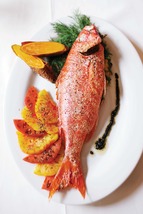
Cooking a fish whole keeps the flesh especially moist and flavorful—not to mention the excitement an entire fish provides at serving time. And it couldn't be easier.
1 3 1/2-pound whole red snapper, cleaned and scaled
8 tablespoons olive oil
2 cloves garlic, minced
1 teaspoon salt
1 tablespoon plus 2 teaspoons lemon juice
2 large sprigs rosemary
2 tablespoons wine vinegar
1/2 teaspoon Dijon mustard
1/4 teaspoon fresh-ground black pepper
1/3 cup chopped flat-leaf parsley
1. Heat the oven to 450°F. Rinse the fish and dry the surface and cavity thoroughly with paper towels. Put the fish on a baking sheet and cut shallow incisions about 1 inch apart in each side. Rub the fish all over with 1 tablespoon of the oil. Sprinkle both sides with the garlic, 1/2 teaspoon of the salt, and 2 teaspoons lemon juice. Put the rosemary in the fish cavity. Roast the fish until just done, about 25 minutes.
2. In a small glass or stainless-steel bowl, whisk together 1 tablespoon lemon juice, wine vinegar, mustard, remaining 1/2 teaspoon salt, and the pepper. Add remaining 7 tablespoons oil slowly, whisking. Whisk in the parsley.
3. Serve the fish on a platter. Run a knife between the flesh and the bones and lift off the fillet with the skin attached. Turn the fish over and repeat. Pass the parsley vinaigrette.
Carving Whole Fish
1. Place the fish on a cutting board with the belly toward you. Using a fish knife and a fork, loosen the skin behind the gill and carefully remove it by lifting it back toward the tail.
2. Using the knife, make a lengthwise cut along the center line of the flesh. Then make a second, crosswise cut in the middle of the fish to make four quarter filets.
3. Run the knife under the filets to separate them from the bone. Working with one piece at a time, gently push each quarter filet off the bone and transfer it to an individual plate.
4. Gripping the fish's tail, gently lift the backbone up and away from the bottom half of the fish. Set aside head and backbone on cutting board and repeat steps.
Feeling hungry? Dishes/entrees were made by and are available at Halls Chophouse. 434 King St., 843-727-0090. www.hallschophouse.com

